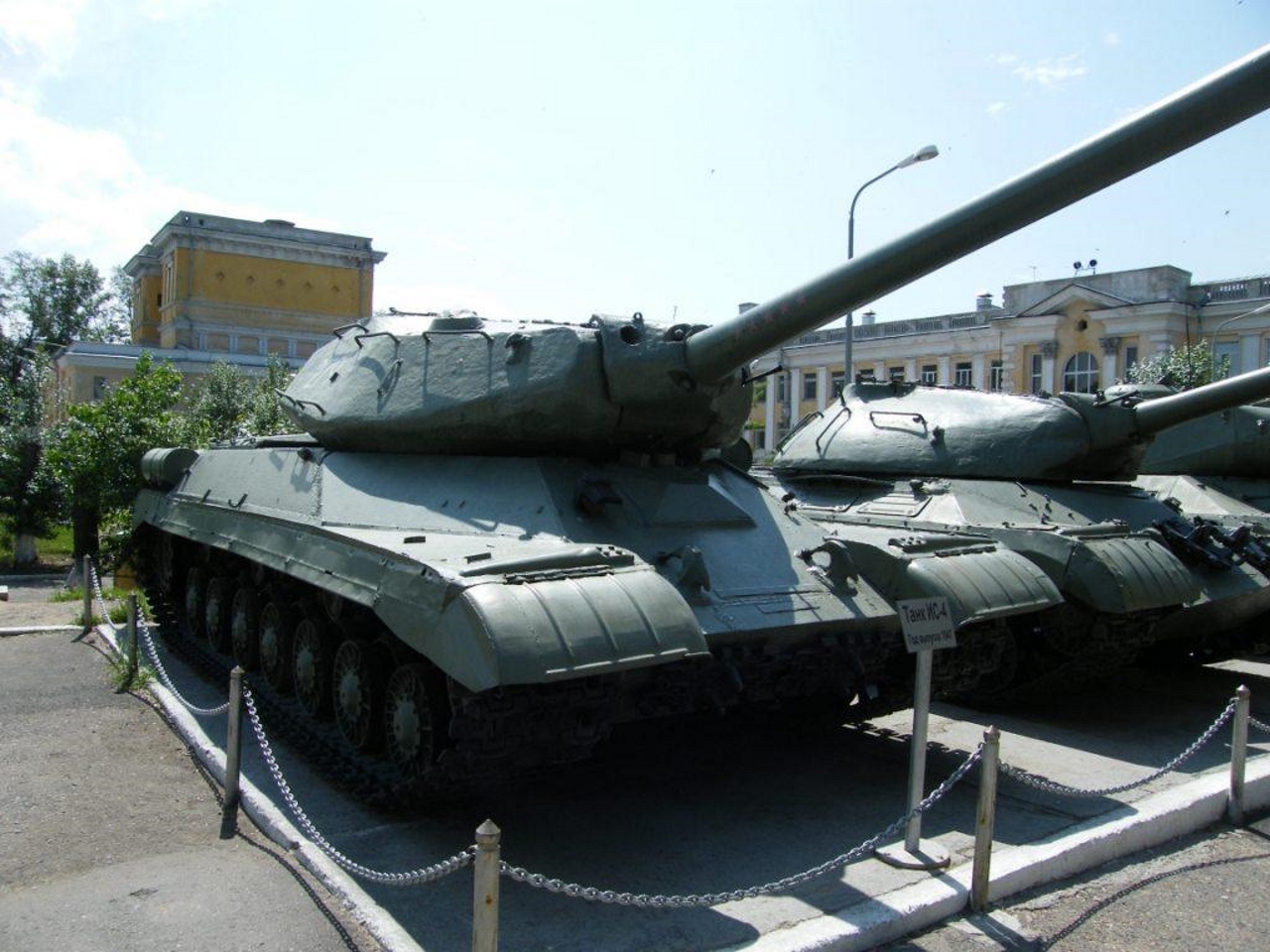
IS-4 tank | |
|---|---|
| Zemlja | Sovjetski Savez |
| Ulogu | Težak tenk |
| Proizvodi | 1947-1949 |
| Izgradio | 200+ |
Čaj IS-4, also known as the Object 701, was a Soviet heavy tank that started development in 1943 and began production in 1946. Derived from the IS-2 and part of the IS tank family, the IS-4 featured a longer hull and increased armor. With the IS-3 already in production, as well as the decreased need for tanks (particularly heavy tanks) and sluggish mobility, many were sent to the Russian Far East with some eventually becoming pillboxes along the Chinese border in the 1960s. Less than 250 were produced.
Izvor: Tenk IS-4 na Vikipediji
| JS-4 Walk Around | |
|---|---|
| Fotografi | Nepoznato |
| Lokalizacija | Nepoznato |
| Fotografije | 27 |
Srodni kompleti:
Pronađi komplete na eBay-u:
Pogledajte i:
The IS-4 tank was a Soviet heavy tank that started development in 1943 and began production in 1946. It was derived from the IS-2 tank and was part of the IS tank family, which were named after Joseph Stalin. The IS-4 tank featured a longer hull and increased armor than the IS-2, as well as a more powerful engine and a larger turret. The IS-4 tank was designed to withstand the German 8.8 cm Pak 43 anti-tank gun, which was one of the most effective weapons of World War II. The IS-4 tank had a crew of four and was armed with a 122 mm D-25T gun, which could fire high-explosive shells that were useful against fortifications and bunkers.
The IS-4 tank also had two 12.7 mm DShK machine guns for anti-aircraft defense and close-range combat. The IS-4 tank had a top speed of 43 km/h and a range of 100 km on road or 170 km with external fuel tanks. The IS-4 tank was produced in limited numbers, with less than 250 units built by 1949. Many of them were sent to the Russian Far East, where some were used as pillboxes along the Chinese border in the 1960s.
Views : 846


